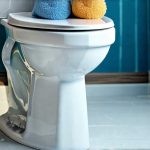Living with bladder issues – whether it’s urgency, frequency, incontinence, or interstitial cystitis – can significantly impact daily life. It’s more than just an inconvenience; it can dictate social activities, work performance, and overall well-being. Many people find themselves constantly planning around bathroom trips, leading to anxiety and a diminished quality of life. However, it doesn’t have to be this way. With thoughtful planning and proactive strategies, individuals can reclaim control over their days and live fulfilling lives despite these challenges. This article aims to provide practical guidance and insights into structuring productive days while prioritizing bladder health, focusing on lifestyle adjustments and mindful organization rather than medical treatments.
The key isn’t necessarily eliminating bladder symptoms (although symptom management is crucial with appropriate healthcare professional support), but learning to live alongside them in a way that minimizes disruption and maximizes independence. It’s about building routines, understanding personal triggers, and developing coping mechanisms that empower you to engage fully in your life. This requires self-awareness, patience, and a willingness to adapt. The following strategies are designed to help you navigate daily activities with more confidence and less stress, fostering a sense of normalcy and freedom despite bladder health concerns.
Understanding Your Bladder & Daily Patterns
Successfully planning productive days around bladder health begins with deep understanding – both of your own body and the patterns that influence your bladder behavior. This isn’t about obsessing over every trip to the bathroom; it’s about gaining insight into what factors exacerbate symptoms and identifying times when you feel more secure or comfortable. Keep a bladder diary for a week or two, noting:
- Time of day
- Fluid intake (type and amount)
- Urgency levels (on a scale of 1-5)
- Activities performed before urgency
- Bathroom trips
- Any associated emotional states (stress, anxiety, etc.)
This diary will reveal personalized patterns. Do you notice increased urgency after caffeine consumption? Does stress consistently trigger symptoms? Are there specific times of day where your bladder feels more sensitive? Recognizing these triggers is the first step towards proactive management. It’s also important to acknowledge that bladder function can fluctuate; some days will be better than others, and accepting this variability is crucial for avoiding frustration. Understanding how fluid intake impacts your bladder is key – explore strategies for managing hydration throughout the day.
Beyond personal patterns, understanding how daily routines impact bladder health is essential. Consider the timing of your fluid intake throughout the day – spreading it out evenly rather than gulping large amounts at once can reduce urgency. Similarly, assess your activity levels. While regular exercise is beneficial overall, high-impact activities might exacerbate symptoms for some individuals. Identifying these connections allows you to make informed choices that support both productivity and bladder comfort. Remember that proactive awareness is far more effective than reactive responses.
Strategic Scheduling & Time Management
Once you have a better grasp of your bladder’s behavior, strategic scheduling becomes incredibly powerful. This isn’t about restricting activities; it’s about planning around them intelligently. Prioritize tasks and allocate time blocks for different activities, factoring in buffer zones for bathroom breaks. Avoid overly ambitious schedules that leave little room for flexibility – unexpected urgency can derail even the best-laid plans. For further insight into organizing your day, consider scheduling tips designed for bladder sensitivity.
Instead of rigidly adhering to a fixed timetable, embrace a more fluid approach. Break down larger tasks into smaller, manageable chunks. This minimizes pressure and allows you to take breaks as needed without feeling overwhelmed. For example, instead of aiming to complete an entire project in one sitting, divide it into several segments spread throughout the day. Consider scheduling demanding or stressful activities during times when your bladder typically feels more stable. If mornings are consistently challenging, prioritize less demanding tasks then, saving more focused work for the afternoon or evening.
Furthermore, planning bathroom breaks into your schedule can alleviate anxiety and prevent accidents. Don’t view these breaks as interruptions; consider them essential self-care practices that support productivity. Use this time to briefly relax, stretch, or practice mindfulness – turning it into a moment of calm amidst a busy day. The goal is to create a sense of control and predictability, reducing the fear and stress associated with bladder symptoms.
Minimizing Triggers & Optimizing Fluid Intake
Identifying and minimizing triggers is paramount for managing bladder health throughout the day. This extends beyond caffeine and alcohol – consider other potential irritants like spicy foods, acidic fruits, artificial sweeteners, and carbonated beverages. While complete elimination isn’t always necessary or desirable, reducing consumption can significantly lessen symptoms. You may find it helpful to review low-irritation meal options for sensitive bladders.
- Experiment with eliminating one trigger at a time to see if it makes a difference.
- Pay attention to how different foods affect your bladder.
- Consult with a healthcare professional for personalized guidance on dietary adjustments.
Optimizing fluid intake is also crucial. Aim for consistent hydration throughout the day, but avoid large volumes at once. Sip water regularly rather than gulping down entire glasses. This helps maintain adequate hydration without overwhelming the bladder. Consider setting reminders to drink water periodically – it’s easy to forget when you’re focused on other tasks. Also, be mindful of timing: reduce fluid intake a few hours before bedtime to minimize nighttime awakenings.
Leveraging Assistive Devices & Protective Measures
Don’t hesitate to utilize assistive devices and protective measures to enhance confidence and independence. This isn’t a sign of weakness; it’s a practical step towards managing your condition and maintaining an active lifestyle. Options include:
- Absorbent products: Discreet pads or underwear can provide peace of mind, especially during activities where access to restrooms is limited.
- Portable urinals: For individuals with mobility issues or who anticipate difficulty reaching a restroom quickly, portable urinals can be invaluable.
- Location scouting: Before venturing out, identify accessible restrooms along your route or at your destination. Apps and websites can help locate facilities – planning for bathroom access is a proactive step.
Preparing for potential accidents is also important. Carry a change of clothes in a discreet bag, just in case. This simple precaution can reduce anxiety and allow you to navigate unexpected situations with greater confidence. Remember that preparedness doesn’t limit freedom; it enhances it. It allows you to participate fully in life without constant fear or worry.
Building Resilience & Managing Stress
Living with bladder health challenges can be emotionally taxing. Chronic urgency, frequency, and incontinence can lead to anxiety, depression, and social isolation. Therefore, building resilience and managing stress are integral parts of productive day planning. Incorporate stress-reducing techniques into your daily routine, such as:
- Mindfulness meditation
- Deep breathing exercises
- Yoga or tai chi
- Spending time in nature
Prioritize self-care activities that bring you joy and relaxation – reading a book, listening to music, taking a warm bath. Social connection is also vital; maintain relationships with friends and family who provide support and understanding. Don’t hesitate to seek professional help if you’re struggling emotionally. A therapist or counselor can provide coping strategies and emotional support. Remember that self-compassion is essential – be kind to yourself, acknowledge your challenges, and celebrate your successes. Bladder health management is a journey, not a destination, and it requires patience, persistence, and self-care along the way. Consider incorporating nature walks into your routine to support overall bladder health.





















